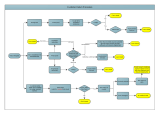Presto P4 is designed to allow faster, safer, and easier pallet loading and unloading. Pallets may be loaded or unloaded in a single step, using a fork truck, or hand pallet truck. Using a pushbutton or footswitch control, the operator can position boxes or containers at a convenient working height. This allows workers to load or unload without bending or stretching.
The unit includes a photo eye toe guard feature. A photo eye is positioned near the front of the unit. If the operator’s toes block this photo eye, the unit stops immediately.
Presto P4 is designed to allow faster, safer, and easier pallet loading and unloading. Pallets may be loaded or unloaded in a single step, using a fork truck, or hand pallet truck. Using a pushbutton or footswitch control, the operator can position boxes or containers at a convenient working height. This allows workers to load or unload without bending or stretching.
The unit includes a photo eye toe guard feature. A photo eye is positioned near the front of the unit. If the operator’s toes block this photo eye, the unit stops immediately.




















-
 1
1
-
 2
2
-
 3
3
-
 4
4
-
 5
5
-
 6
6
-
 7
7
-
 8
8
-
 9
9
-
 10
10
-
 11
11
-
 12
12
-
 13
13
-
 14
14
-
 15
15
-
 16
16
-
 17
17
-
 18
18
-
 19
19
-
 20
20
Presto P4 User manual
- Type
- User manual
- This manual is also suitable for
Presto P4 is designed to allow faster, safer, and easier pallet loading and unloading. Pallets may be loaded or unloaded in a single step, using a fork truck, or hand pallet truck. Using a pushbutton or footswitch control, the operator can position boxes or containers at a convenient working height. This allows workers to load or unload without bending or stretching.
The unit includes a photo eye toe guard feature. A photo eye is positioned near the front of the unit. If the operator’s toes block this photo eye, the unit stops immediately.
Ask a question and I''ll find the answer in the document
Finding information in a document is now easier with AI
Related papers
Other documents
-
 ICEbear TAO TAO 110cc Gas ATV Fully Automatic ATV 4 Wheeler for KIDS - New SPORTY Black Color User manual
ICEbear TAO TAO 110cc Gas ATV Fully Automatic ATV 4 Wheeler for KIDS - New SPORTY Black Color User manual
-
 Presto Lifts PPS2200-125AS User guide
Presto Lifts PPS2200-125AS User guide
-
SEM ME-P3E Mag EraSURE Operating instructions
-
SEM ME-P3 Mag EraSURE Operating instructions
-
 Presto Lifts XZ50-20 User guide
Presto Lifts XZ50-20 User guide
-
 Presto Lifts XS36-15 User guide
Presto Lifts XS36-15 User guide
-
Vestil EHLTG Owner's manual
-
 Presto Lifts XL36-20 User guide
Presto Lifts XL36-20 User guide
-
Presto Lifts M452 User guide
-
 Presto Lifts XBP24-10 User guide
Presto Lifts XBP24-10 User guide


























